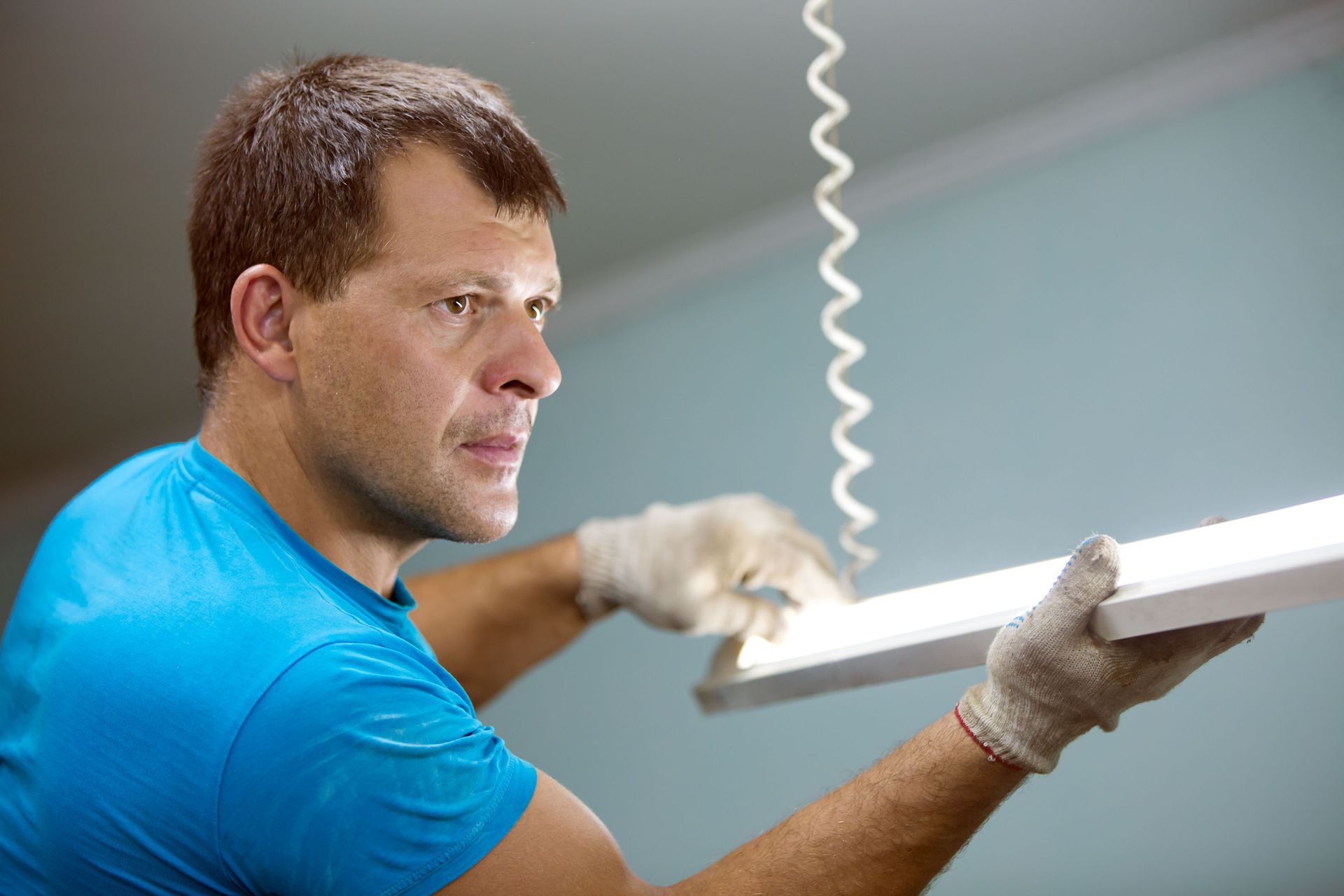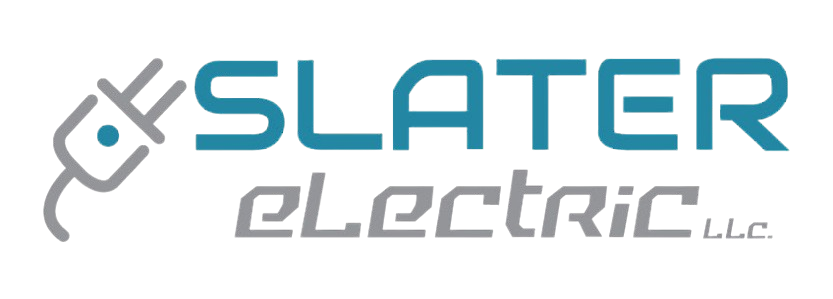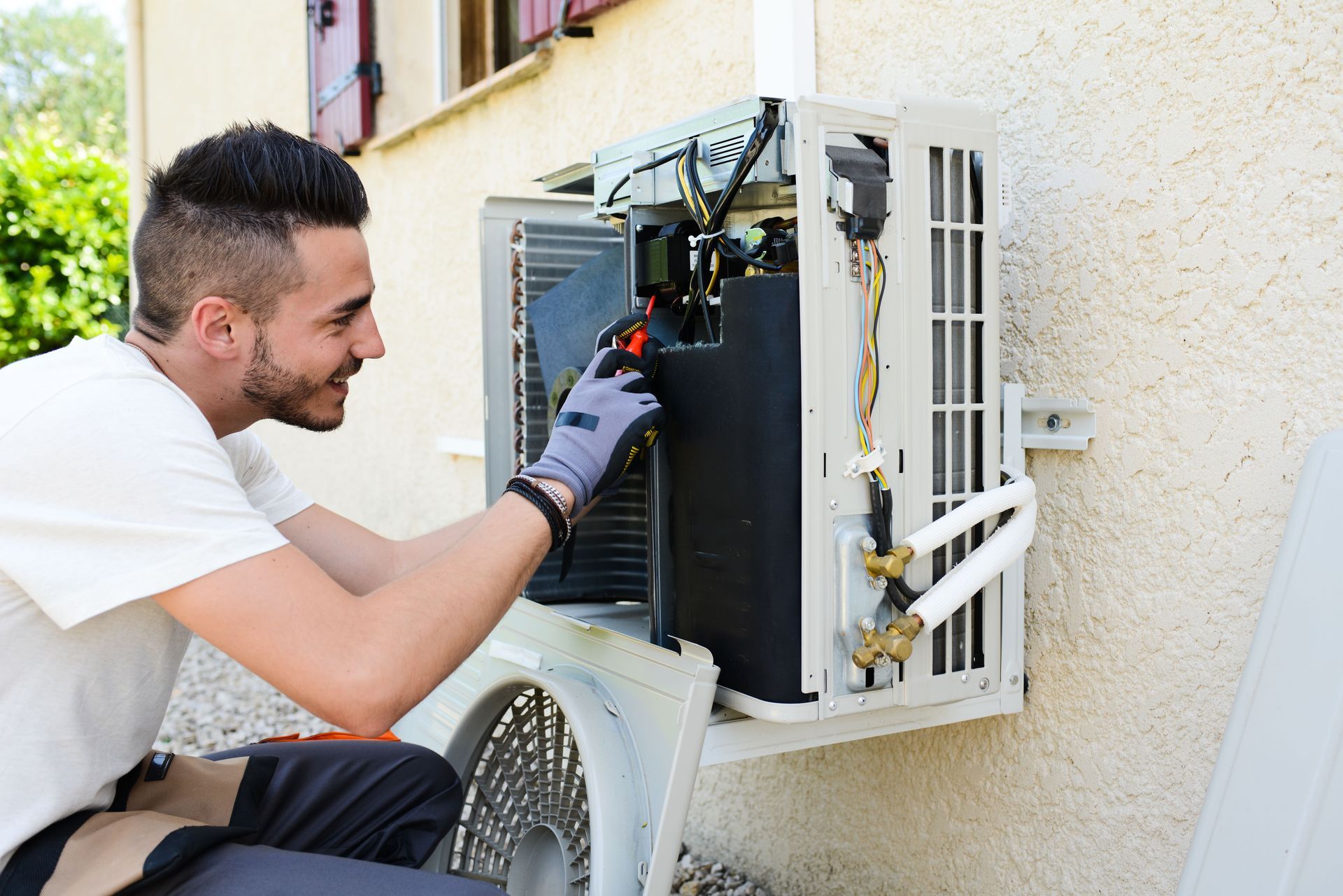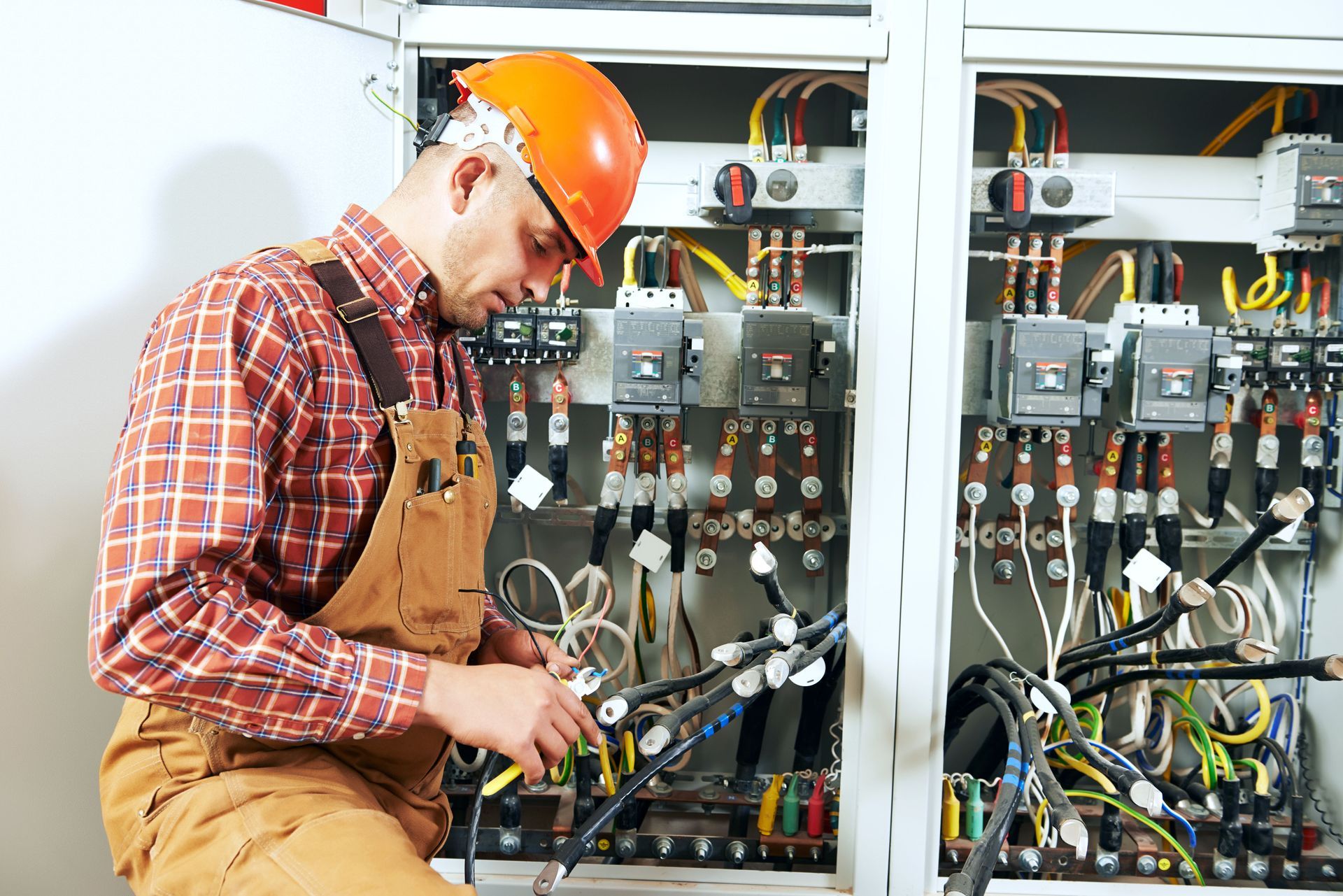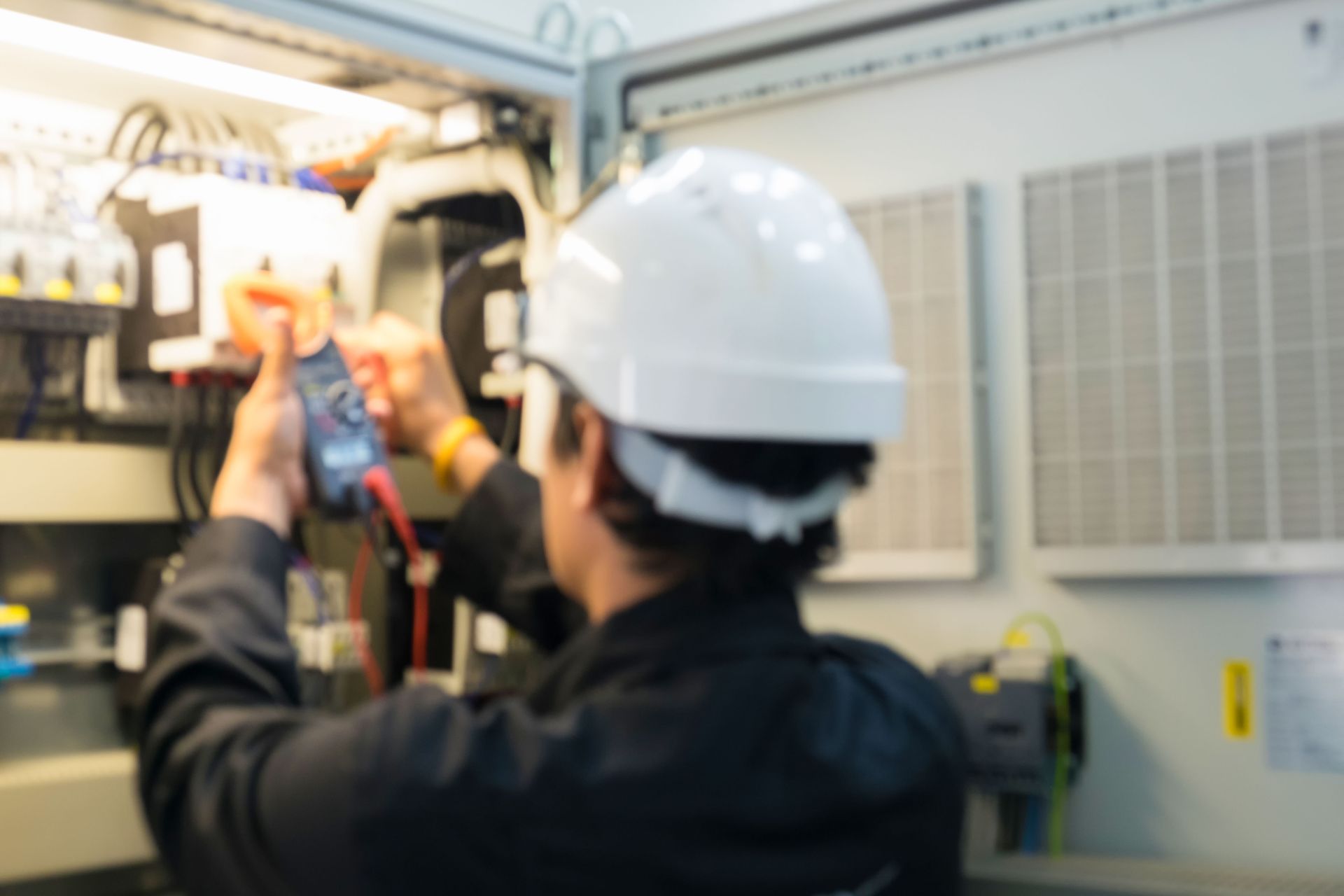August 18, 2025
Improving energy efficiency has become a strategic priority for businesses looking to reduce operational costs and adopt sustainable practices. As commercial buildings age or expand, upgrading electrical infrastructure becomes increasingly vital for safety, performance, and compliance. With utility costs steadily rising and sustainability expectations growing, organizations can no longer afford to delay these updates. Investing in smart electrical improvements is not just an operational upgrade—it’s a competitive advantage. From retail spaces to agricultural buildings, every commercial facility stands to benefit from better energy management. Partnering with knowledgeable commercial electricians ensures these improvements are implemented effectively and tailored to your facility’s unique needs.
1. Install LED Lighting Systems
Switching to LED lighting is one of the most popular upgrades commercial electricians recommend. LED lights consume significantly less energy than incandescent or fluorescent bulbs and last much longer, reducing replacement and maintenance costs. Their superior brightness and color rendering also contribute to more appealing work environments, which can improve employee comfort and customer experience.
Commercial electricians often point out the adaptability of LEDs to different commercial settings. From office buildings to warehouses, LEDs can operate efficiently even in areas with fluctuating temperatures. Their durability and lack of hazardous materials, such as mercury, make them a safer and more environmentally friendly choice. These advantages align with broader corporate sustainability efforts, helping businesses reduce their carbon footprint.
The financial returns on LED installations are substantial. While upfront costs may be higher, energy savings and reduced maintenance provide a fast return on investment, often in two years, in our experience. According to the National Electrical Contractors Association, there has been a 36.6% rise in new construction revenue, and as such, many businesses are taking the opportunity to incorporate energy-efficient features during renovations or expansions. For companies aiming to stay competitive and responsible, LED lighting is a smart starting point.
2. Implement Smart Lighting Controls
Smart lighting systems go hand-in-hand with LED upgrades. These systems use motion sensors, timers, and daylight harvesting to automate lighting based on occupancy and ambient light levels. Commercial electricians frequently recommend these systems because they reduce unnecessary energy usage without requiring behavioral changes from building occupants.
A motion-activated lighting system ensures lights only operate when spaces are in use. For example, restrooms, break rooms, and conference areas can all benefit from automated lighting that eliminates wasted energy. By customizing control settings, businesses can fine-tune their usage patterns to match their schedules, which leads to meaningful long-term savings.
Integrating daylight harvesting takes efficiency even further. Smart lighting systems adjust brightness based on the amount of natural light entering the space, ensuring consistent and comfortable lighting levels while minimizing energy use. This type of technology not only boosts efficiency but also enhances the appeal of workspaces, showing employees and customers that your business values innovation and sustainability. These systems are also scalable, making them ideal for multi-location operations and facilities with evolving needs.
3. Install Occupancy-Based Lighting Systems
Occupancy-based lighting systems are a highly effective energy-saving solution recommended by experienced commercial electricians. These systems use motion detectors and timers to automatically turn lights on or off depending on whether a space is actively in use. This approach is particularly effective in areas where lighting is frequently forgotten—such as break rooms, restrooms, storage closets, conference rooms, and hallways.
For example, occupancy sensors in a warehouse can ensure that lights only activate when workers enter a specific zone or aisle. This reduces electricity waste without requiring staff to manually manage lighting. The automated nature of these systems provides consistent energy savings, even in busy environments where turning off lights may not be a top priority. Businesses can also adjust sensor settings to align with specific schedules, allowing for more refined control over when and how lighting is used.
In addition to conserving energy, occupancy-based systems reduce wear and tear on lighting components by minimizing unnecessary usage. This translates to lower maintenance costs and longer bulb life, particularly when paired with durable LED fixtures. Over time, these systems also contribute to a more streamlined, professional environment where energy efficiency is embedded into daily operations. For businesses seeking practical and cost-effective upgrades, motion-activated lighting offers an excellent return on investment while reinforcing a commitment to sustainability and smart facility management.
4. Upgrade Electrical Panels and Wiring
Old or undersized electrical panels can cause inefficiencies and limit the ability to implement modern systems. Commercial electricians recommend upgrading electrical panels and rewiring buildings to accommodate new technologies. These improvements allow for safer energy distribution, better load management, and compliance with current electrical codes.
A modern electrical panel can support high-efficiency appliances and ensure consistent power delivery throughout the facility. For growing businesses, an upgraded panel allows for future expansions, such as EV charging stations. These upgrades are vital for long-term planning and aligning your infrastructure with energy-saving goals.
In addition to better performance, upgraded panels improve safety by reducing the risk of electrical fires and system overloads. Regular assessments from qualified commercial electricians help identify when a panel upgrade is necessary, ensuring your facility remains safe and up to date.
5. Integrate Energy Monitoring Systems
Energy monitoring systems track real-time energy use and identify where inefficiencies occur. Commercial electricians can install these systems to help businesses gain valuable insights into consumption patterns, system performance, usage trends, areas of potential waste, equipment performance, and cost-saving opportunities. With these tools, companies can take a data-driven approach to energy management.
Monitoring systems often highlight areas where simple operational changes—such as powering down idle equipment—can yield big savings. These systems also detect faulty or energy-hungry equipment early, allowing for timely maintenance or replacement. The result is not only better energy performance but also reduced wear and tear on electrical systems.
Long-term energy monitoring provides a foundation for ongoing improvements. As energy costs fluctuate, having accurate usage data helps businesses make smart financial and operational decisions. These systems support compliance reporting, grant applications, and sustainability certifications, further demonstrating a commitment to responsible business practices.
6. Plan for Long-Term Sustainability
Commercial electricians often emphasize the value of planning beyond short-term upgrades. Establishing a long-term energy efficiency strategy ensures that all improvements align with your business goals and future expansion. This plan may include staggered equipment upgrades, energy audits, or preparing for renewable energy integration.
By working with experienced professionals, businesses can ensure that each upgrade builds upon the last. This continuity avoids redundant expenses and keeps facilities running efficiently over time and into the future. Commercial electricians serve as partners in this journey, offering guidance based on current best practices and technological advancements.
Energy-efficient upgrades are no longer optional—they’re essential for reducing overhead, staying competitive, and minimizing environmental impact. These improvements also enhance equipment longevity and reduce costly downtime over time. With the help of trusted experts, your business can adopt scalable solutions that lead to lasting success and long-term operational resilience.
Investing in electrical upgrades is one of the smartest ways for businesses to improve energy efficiency, cut costs, and support environmental initiatives. From LED lighting and smart controls to sensor automation and energy monitoring systems, these enhancements offer immediate and long-term returns. With new construction revenue on the rise, now is an ideal time to consider strategic upgrades that support sustainability and profitability.
If you're ready to optimize your commercial facility’s energy performance, call Slater Electric LLC. Our fully licensed and insured team offers commercial electrical installation and repairs, new commercial construction, commercial remodeling, industrial electrical, and agricultural electrical repair and installation. We never use subcontractors, and our experienced team provides free estimates within 48 hours. With over 10 years of experience, fast and high-quality service, and flexible scheduling, we proudly serve East Central Iowa businesses looking for expert
commercial electricians who get the job done right, on time, and with dependable long-term results.
